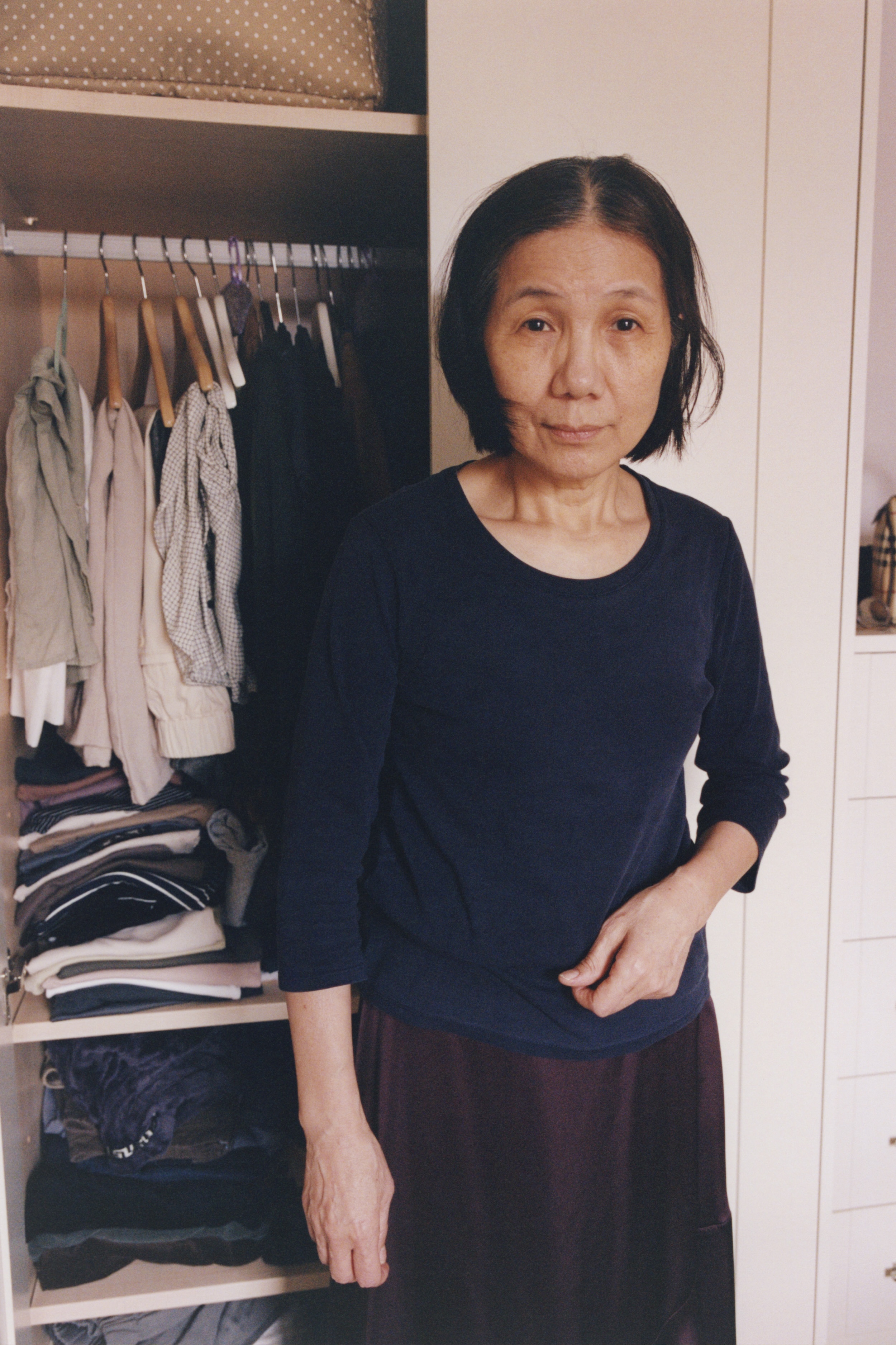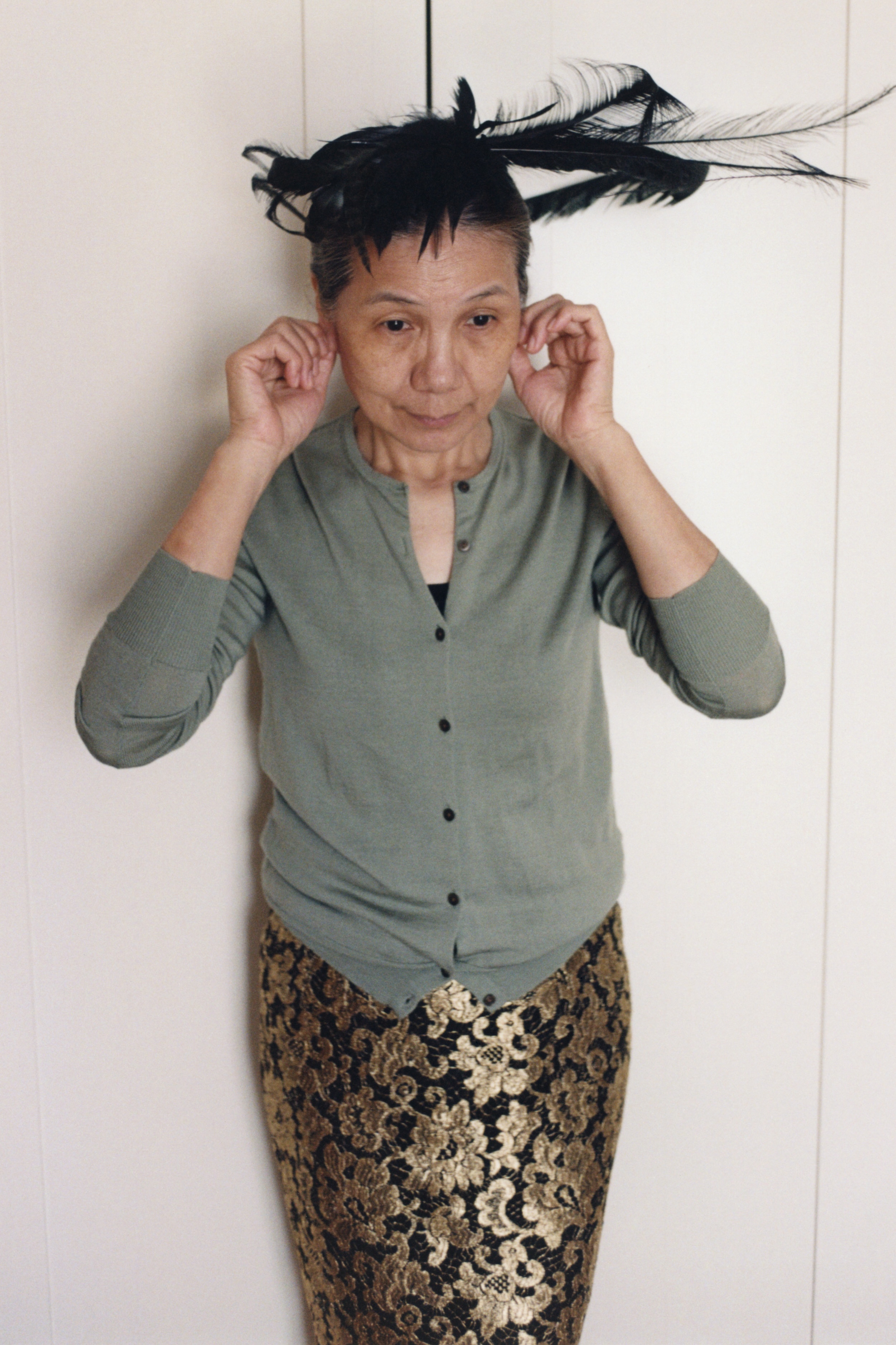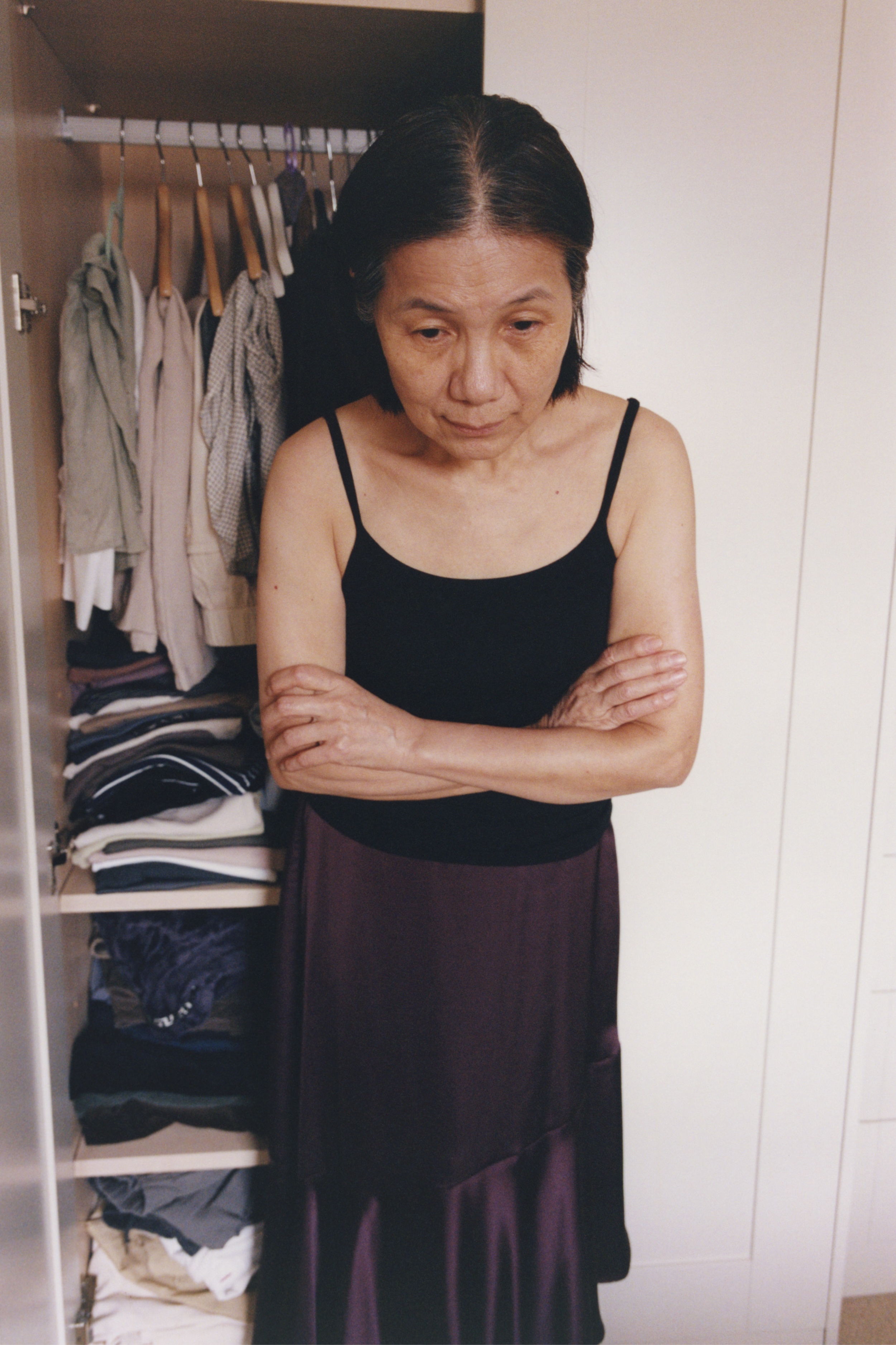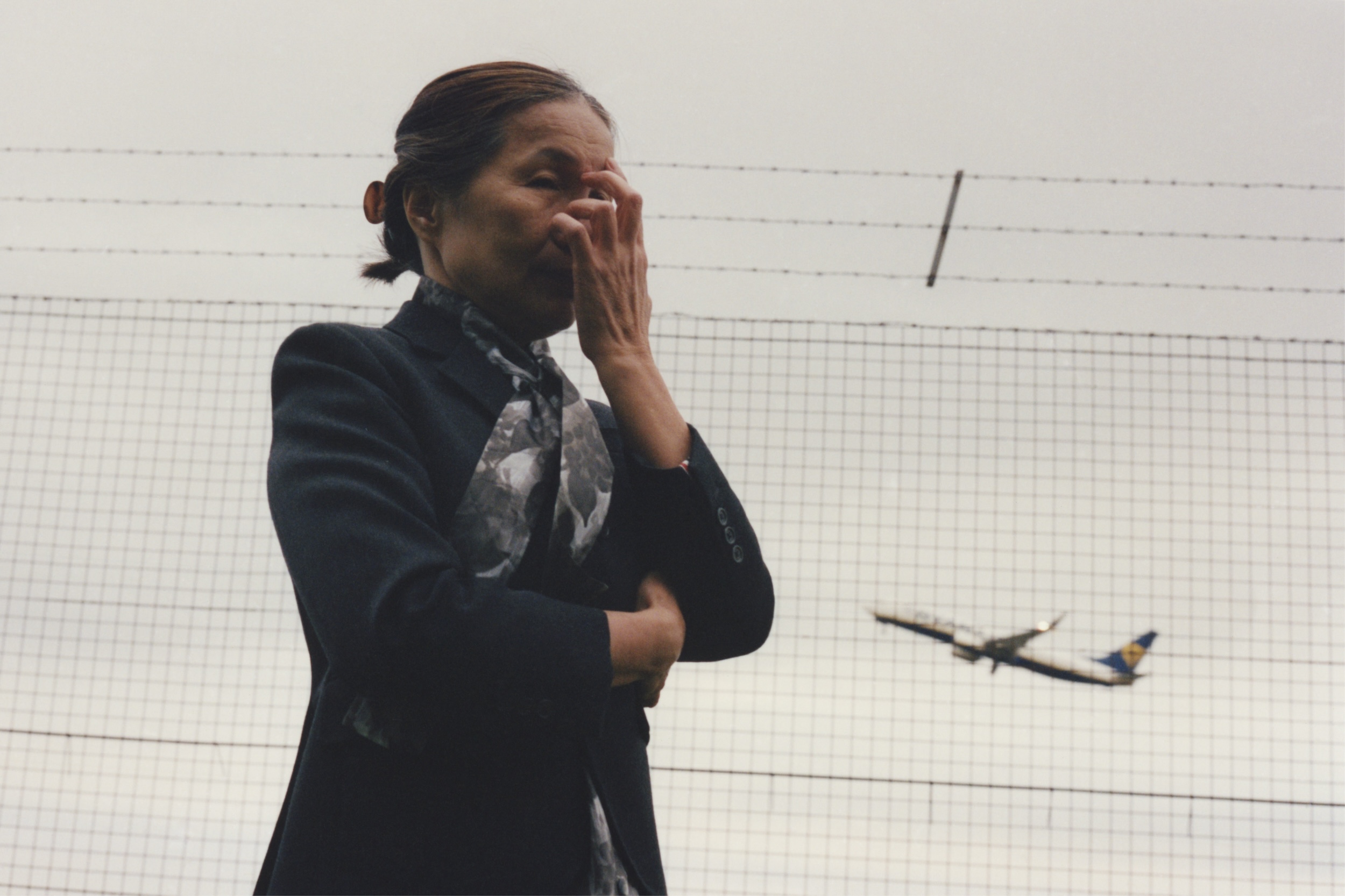All images © Nimie Li
The photographer’s graduate project about his mother explores his Chinese-British adolescence and poses questions around how movement effects intimacy
Nimie Li’s I danced and saw you cry, yesterday’s dream has a sour taste on monday. follows a woman on a journey. Its direction is unclear, but her continued motion defines the series. It’s displayed in fragments: she walks through a thicket, naps on a train, dances on the deck of a ferry, casts a sidelong glance as she lowers herself into the back seat of a car. Across these transitory terrains, she’s depicted with a quiet sense of familiarity. Though she rarely acknowledges the camera, an intimate connection between subject and photographer is palpable.
This body of work was displayed at Li’s recent graduate showcase at Central Saint Martins, where he studied Fashion Communication. Alongside his studies, he has worked on projects with publications and brands including The Face, Boy.Brother.Friend and SSENSE. At the core of much of his work is an exploration of how many nuances and specificities of his own life and character can be reflected in photographs taken with him behind the camera.
In a rare static moment in this series, Li’s subject tries on outfits; four photographs depict her standing in front of an open wardrobe. Unusually, she looks directly into the lens here, as if for affirmation. By the next image, she has made a decision and is back on the move. She marches up the stairs leading away from a train station platform, eyes trained on the step in front of her as she resumes ignoring the camera. Her clothing – quilted jacket, floral skirt and Nova check handbag – recalls an archetypal English woman. Whilst some of the clothes are hers, others were selected by Li with a clear sensibility: “I was looking for pieces that a British mother might have abandoned,” he tells me.
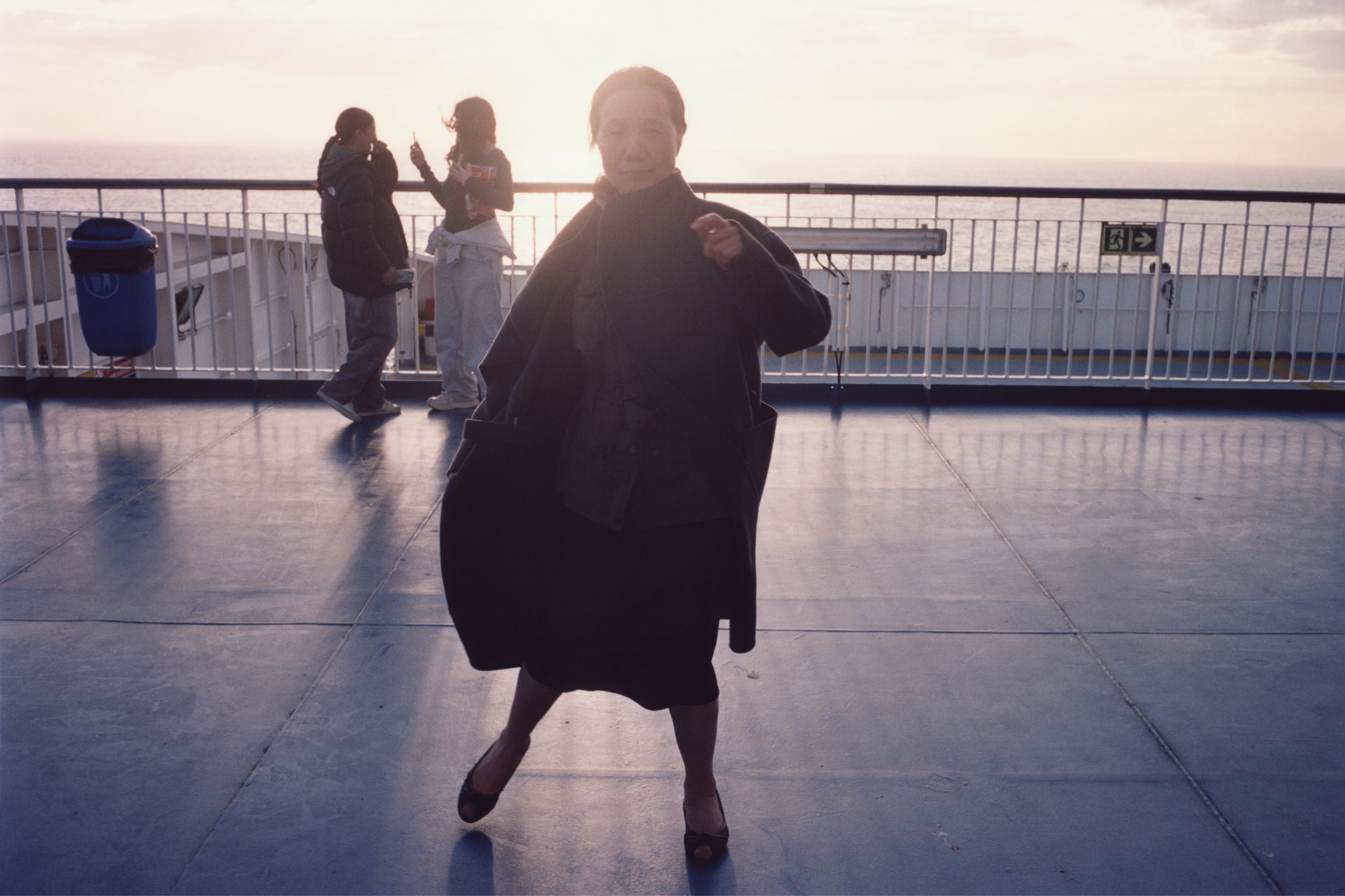
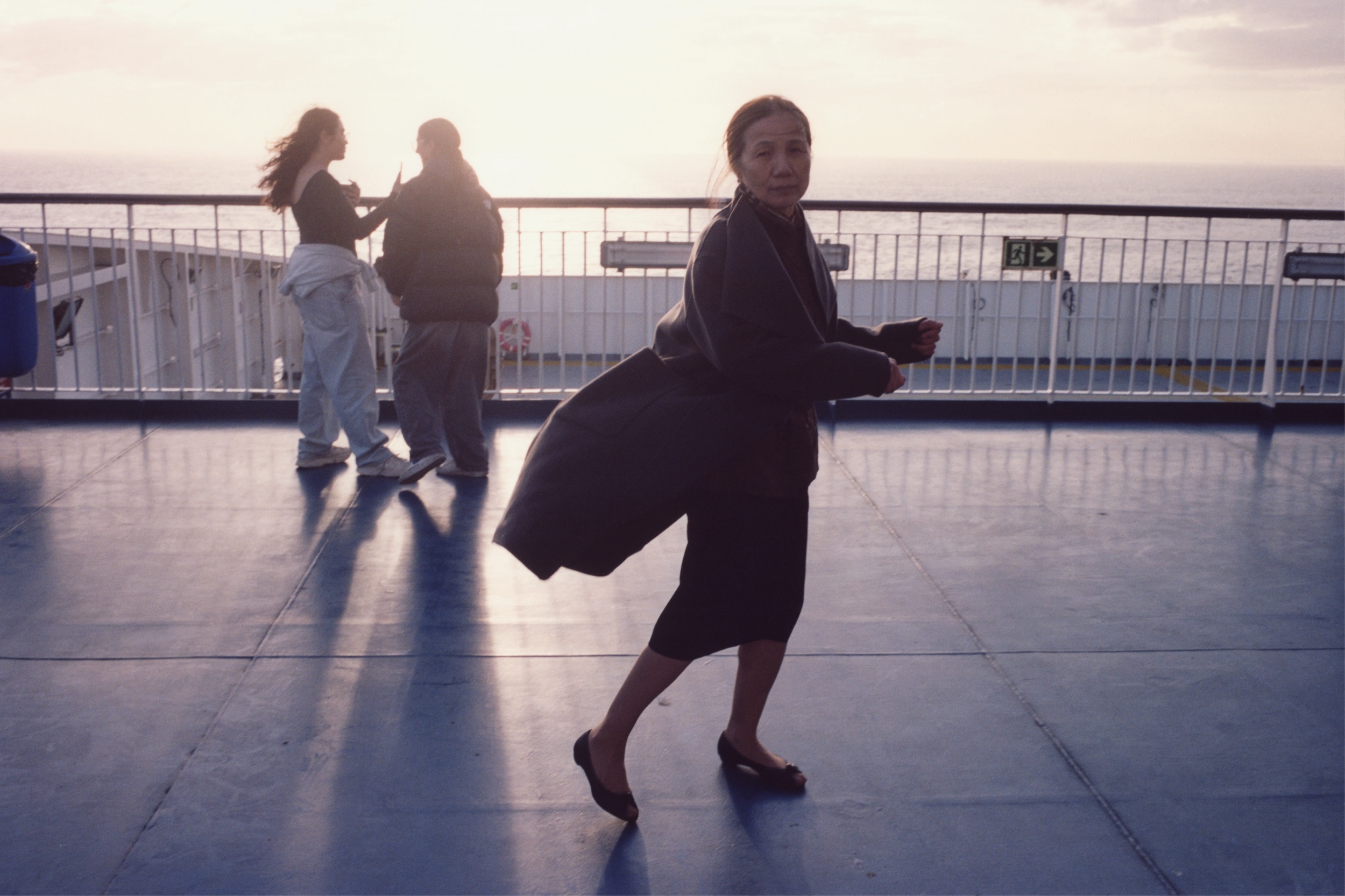
Mostly taken on various trips over a two month period, these images depict Li’s mother, which explains their inherent tenderness. But beneath their surface is a complex web of dynamics and pressures – both internal and external – that complicate their relationship. The images become a record of a world that exists between mother and son. “I’m forever tethered to her and my hometown,” Li explains, “and she’s forever tethered to me and my queerness.”
Transit is a deeply entrenched feature of Li’s identity and his relationship with his mother. His family left their village home in China’s Fujian province in 2007, first moving to Singapore and then, five years later, to the east London suburb of Romford. He was seven years old. Many of his family photographs from around this time were taken on London’s transport system: a sprawling network that represented the beginnings of a new life. These images, taken years later, often imply that a brave new world might be around the corner. Sunlight reflected in windows and concentrated on the travelling figure momentarily bathes her in hope.
Years after their arrival, as his family settled into the humdrum and often challenging rhythm of life as first-generation Chinese immigrants in London, the city’s now-familiar TfL network, remained a site of transition and the possibility of belonging for Li. Underground trains ferried him to and from the clubs where he explored his queer identity. He would wake up back in Romford, crashing emotionally and physically, among a family that struggled to accept his queerness. In these concurrent stories of diaspora and sexuality, journeys into the unknown are ambivalent experiences where excitement is tempered by the harshness of reality. As Li puts it, yesterday’s dream has a sour taste on monday. “For me the train symbolises an ongoing navigation of a precarious sense of belonging, as someone both queer and Chinese,” he says.
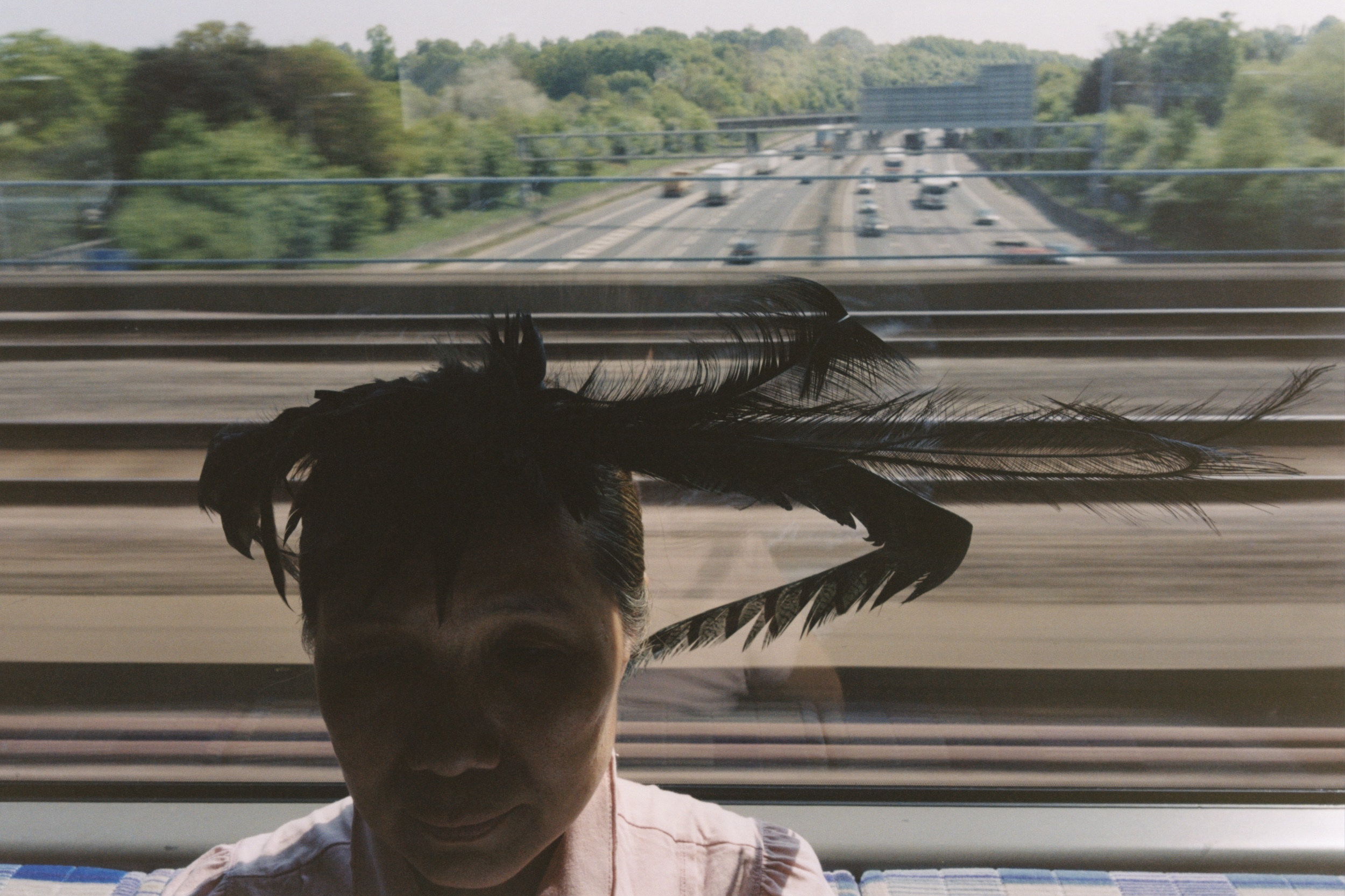
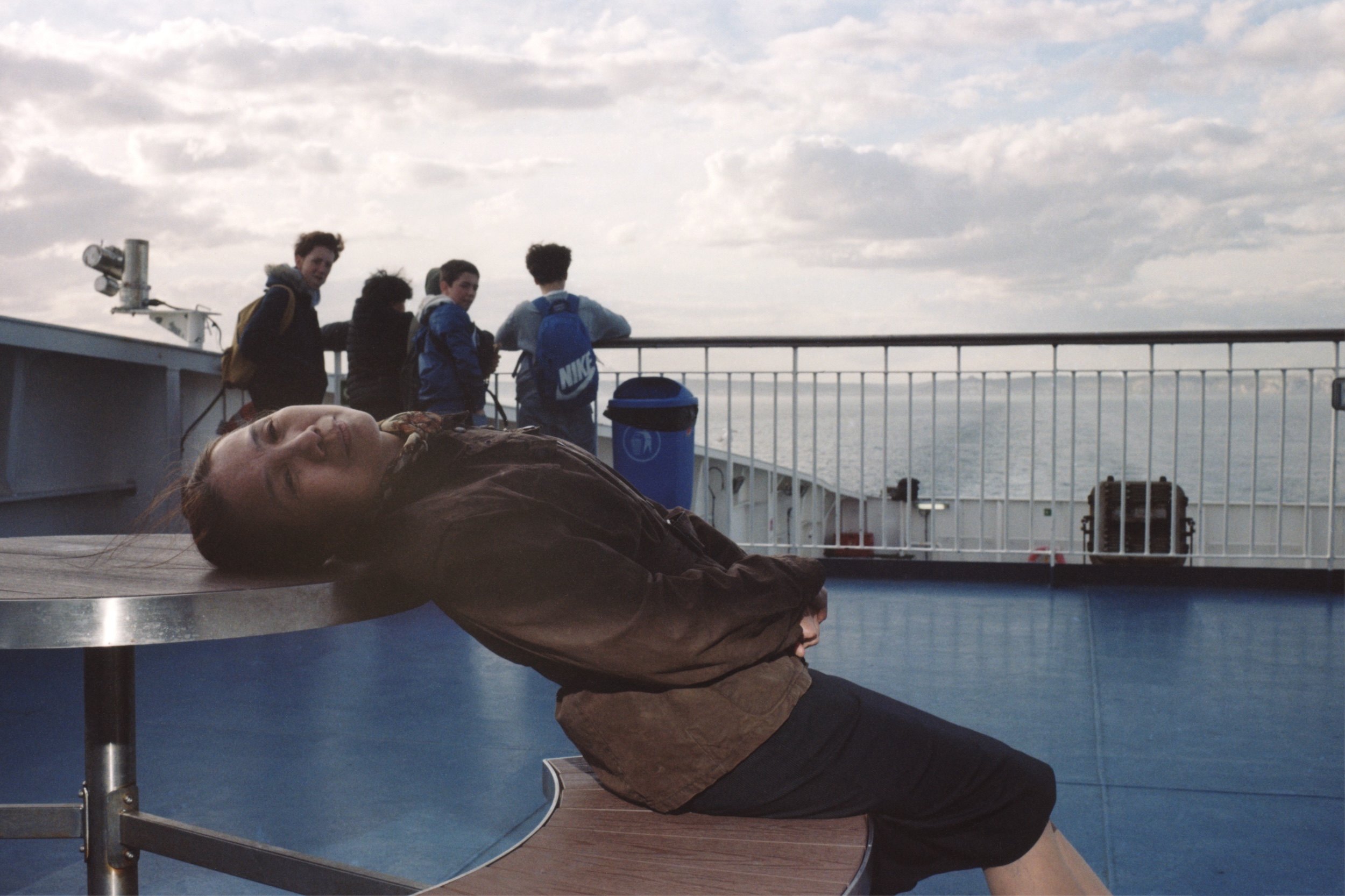
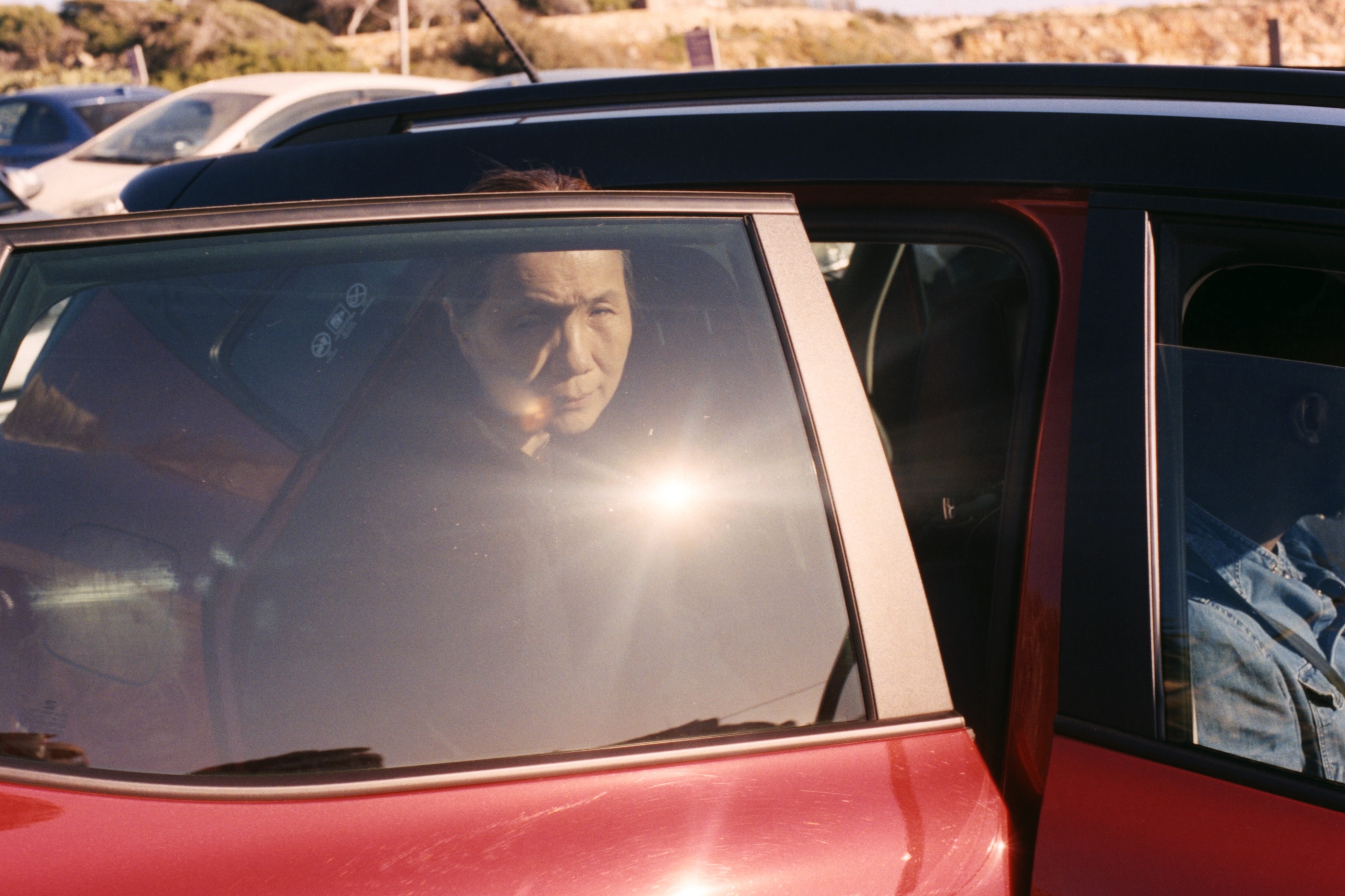
Though mother and son embarked on the same life-changing journey, their lives and worldviews remain very different, painfully so at times. How does one resolve a relationship like this, with its overlapping textures and unspoken tensions? Li’s photographs of his mother attempt to bridge the gap between them. “It’s about understanding each other without having to communicate with words,” he says, “I think we’re usually really bad with words, we can’t tell each other what we truly think.” Through photographs, and through the act of taking photographs, he facilitates a new kind of exchange.
To describe this body of work is to list locations, outfits, poses and objects. Its emotional content is more difficult to take stock of; it’s unmistakable but wordless. Indeed, there’s no concise way to describe a relationship that carries as much baggage as this one. Through this set of images underpinned by movement, Li shows us – and discovers for himself – “how we can meet in a transitional space.”
